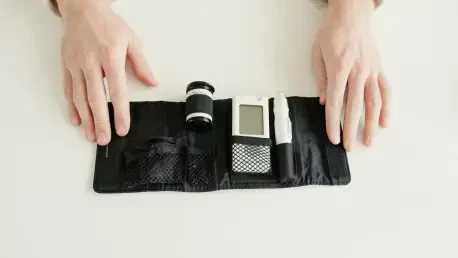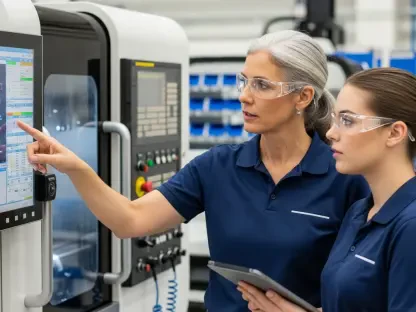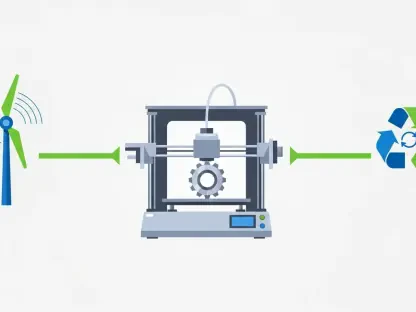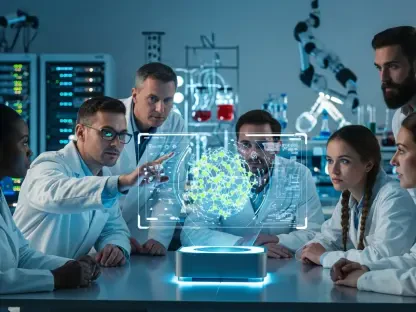In a world where medical technology evolves at a breathtaking pace, ensuring the safety and usability of devices is paramount to protecting patient lives. Imagine a scenario where a surgeon, in the high-stakes environment of an operating room, relies on a cutting-edge tool that must function flawlessly under pressure. This is where rigorous testing becomes not just a regulatory requirement but a moral imperative. Bentley University’s User Experience Center (UXC), nestled within its renowned master’s and PhD Human Factors in Information Design program, has emerged as a key player in this critical space. As one of the few independent consultants in the U.S. providing FDA validation testing services, the center collaborates with commercial and government clients to refine medical devices through comprehensive usability evaluations. Equipped with state-of-the-art labs and innovative tools, the UXC stands at the intersection of business and healthcare, ensuring that life-saving technologies meet the highest standards of safety and effectiveness.
Revolutionizing Medical Device Testing
Cutting-Edge Facilities and Expertise
Bentley University’s UXC distinguishes itself through its advanced facilities, which include tools like eye-tracking software and biometric analysis to scrutinize user interactions with medical devices. These technologies enable the center to conduct detailed evaluations that uncover subtle design flaws, which could otherwise pose risks in real-world medical scenarios. The focus on precision is especially crucial in the highly regulated healthcare sector, where even minor oversights can have significant consequences. By simulating realistic environments, the team meticulously assesses how devices perform under various conditions, ensuring they align with strict safety protocols. This methodical approach not only enhances product reliability but also builds trust among stakeholders who depend on these tools for patient care. The center’s ability to merge academic rigor with practical application creates a unique testing ground where theoretical human factors principles are transformed into actionable design improvements.
Collaborative Efforts with Industry Partners
Beyond its technological capabilities, the UXC thrives on collaboration with a diverse array of industry partners seeking FDA clearance for their innovations. Each year, numerous clients turn to the center for its expertise in usability testing, prototyping, and design thinking, benefiting from a process that prioritizes user safety. A notable aspect of these partnerships is the involvement of graduate students, who gain hands-on experience by working alongside seasoned professionals on complex projects. This synergy fosters an environment where fresh perspectives meet established methodologies, resulting in solutions that are both innovative and compliant with regulatory demands. The center’s role as a bridge between academia and industry ensures that testing outcomes are not only academically sound but also directly applicable to market needs, ultimately contributing to advancements in healthcare technology that save lives and improve outcomes for patients across the globe.
Human Factors at the Heart of Healthcare Innovation
Simulated Surgeries for Real-World Impact
A striking example of the UXC’s commitment to excellence is evident in its rigorous testing processes, such as conducting nearly 80 simulated surgeries over a month for a client seeking anonymity during ongoing evaluations. These simulations, carried out in adapted campus science labs with biological materials, replicate the high-pressure conditions of actual operating rooms to assess a device’s performance. Under the guidance of Senior UX Consultant Lena Dmitrieva, the team focused on identifying design enhancements to ensure both usability and safety before the device reached final production. Every detail, from how a surgeon grips the tool to its coordination with other instruments, was meticulously analyzed to eliminate potential risks. This intensive process underscores the importance of human factors in creating medical tools that are intuitive and reliable, directly impacting the quality of care patients receive in critical situations where precision is non-negotiable.
Empowering Students Through Hands-On Learning
Equally significant is the role of Bentley’s graduate students in these high-stakes projects, as they actively contribute to every stage of the testing process under strict FDA guidelines. Tasked with responsibilities like data collection, managing medical instruments, and operating advanced equipment such as synchronized multi-camera setups, students gain unparalleled exposure to real-world challenges. Their involvement extends to collaborating with external medical teams and documenting detailed observations that inform design iterations. This immersive experience not only hones their technical skills but also prepares them for the complexities of working in regulated industries where attention to detail can mean the difference between success and failure. By balancing academic learning with practical application, the UXC cultivates a new generation of professionals equipped to tackle the evolving demands of healthcare technology, ensuring that user-centered design remains a cornerstone of medical innovation.
Shaping the Future of Patient Safety
Reflecting on a Legacy of Excellence
Looking back, the achievements of Bentley University’s UXC in navigating the intricate landscape of FDA validation testing mark a significant milestone in the realm of medical device development. The center’s unwavering dedication to merging cutting-edge technology with human factors research established a benchmark for safety and usability in healthcare tools. Through countless hours spent in simulated environments, the team meticulously refined devices that ultimately enhanced patient outcomes. Their collaborations with industry partners and the hands-on contributions of students underscored a model of interdisciplinary success that resonated across the sector. This legacy of precision and care reflects a profound commitment to ensuring that every medical tool meets the highest standards before reaching the hands of healthcare professionals.
Paving the Way for Continued Innovation
As the journey forward unfolds, the focus shifts to sustaining this momentum by expanding the scope of testing methodologies and embracing emerging technologies. Stakeholders are encouraged to invest in partnerships that prioritize user-centered design, ensuring that future medical devices remain intuitive and safe under diverse conditions. Exploring new simulation techniques and integrating advanced analytics could further elevate the accuracy of usability assessments. Additionally, fostering educational initiatives that immerse students in real-world challenges will be vital to cultivating talent capable of addressing tomorrow’s healthcare needs. By building on past successes, the path ahead promises to strengthen the bridge between academic research and practical application, ultimately driving innovations that protect and improve lives on a global scale.









